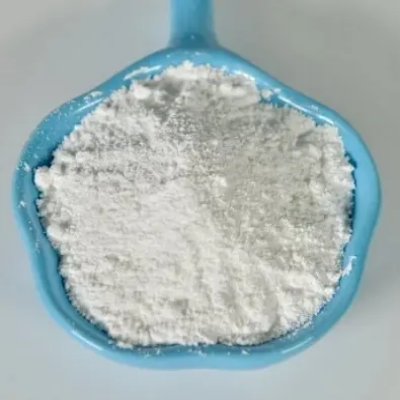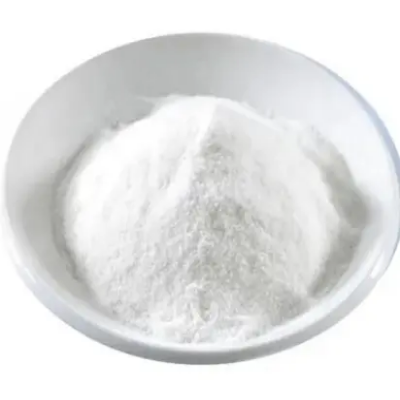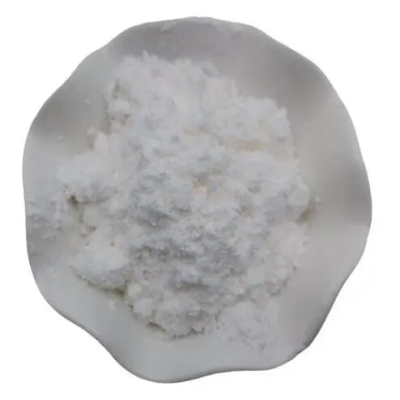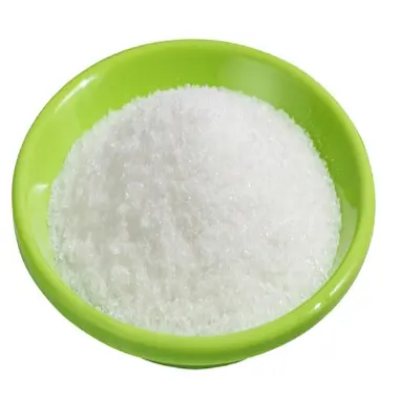-

5-hydroxypyrazine-2-carboxamide CAS:13924-96-4
5-Hydroxypyrazine-2-carboxamide is a chemical compound utilized in various industrial and scientific applications. With a molecular formula of C5H5N3O2, it belongs to the class of pyrazine derivatives, characterized by its unique chemical structure and properties. This compound is known for its versatility, serving as a key building block in the synthesis of pharmaceuticals, agrochemicals, and fine chemicals. Its precise composition and purity make it ideal for research and development purposes, contributing to advancements in drug discovery, material science, and other fields. 5-Hydroxypyrazine-2-carboxamide is available in high-quality grades to meet the diverse needs of laboratories and industries worldwide.
-
![5,6,7,8-Tetrahydroimidazo[1,2-a]pyridin-7-amine dihydrochloride CAS:1417637-66-1](https://cdn.globalso.com/xindaobiotech/VYH6FUCIIBE_I7B6OOPY172.png)
5,6,7,8-Tetrahydroimidazo[1,2-a]pyridin-7-amine dihydrochloride CAS:1417637-66-1
5,6,7,8-Tetrahydroimidazo[1,2-a]pyridin-7-amine dihydrochloride is a chemical compound commonly utilized in scientific research and pharmaceutical applications. With a molecular formula of C8H13Cl2N3, it is typically obtained as a crystalline solid in its dihydrochloride salt form. This compound features a fused heterocyclic ring system, making it valuable for various biochemical and pharmacological investigations. Synthesized under controlled conditions, it ensures purity and consistency in its properties, essential for reliable experimental results.
-
![4-(1-{[(tert-butoxy)carbonyl]amino}cyclopropyl)benzoic acid CAS:1256336-73-8](https://cdn.globalso.com/xindaobiotech/V3@A6KDXTE0I05WML133.png)
4-(1-{[(tert-butoxy)carbonyl]amino}cyclopropyl)benzoic acid CAS:1256336-73-8
4-(1-{[(tert-butoxy)carbonyl]amino}cyclopropyl)benzoic acid, commonly known as Boc-cyclopropylbenzoic acid, is a pivotal compound in organic synthesis and pharmaceutical research. Its structure features a cyclopropyl ring substituted with a benzene carboxylic acid moiety, incorporating a tert-butoxycarbonyl (Boc) protected amine group. This compound offers diverse reactivity, making it valuable for controlled functionalization processes and the synthesis of complex molecules. Its presence in the molecular scaffold makes it of significant interest in medicinal chemistry for the development of potential drug candidates and the creation of structurally diverse molecular libraries.
-

3,6-dibromo-1,4-dimethylquinolin-2(1H)-one CAS:2417419-28-2
3,6-dibromo-1,4-dimethylquinolin-2(1H)-one is a significant compound utilized in organic synthesis and chemical research. Its molecular structure comprises a quinolinone core substituted with two bromine atoms and methyl groups at positions 1 and 4, offering diverse reactivity for various transformations. This compound serves as a valuable building block for the synthesis of pharmaceuticals, agrochemicals, and functional materials. Its dibromo and methyl functionalities render it valuable for the development of heterocyclic compounds and the exploration of novel chemical reactions, making it indispensable in synthetic chemistry endeavors.
-

3,6-dibromo-4-methylquinolin-2(1H)-one CAS:23976-62-7
3,6-dibromo-4-methylquinolin-2(1H)-one is a chemical compound utilized in research and industrial applications. With the molecular formula C10H6Br2NO, it exists as a solid and is characterized by its quinolinone structure. This compound is synthesized through specific chemical reactions under controlled conditions to ensure its purity and consistency in properties. Its bromine-substituted quinolinone core makes it valuable for various chemical and biological studies.
-

trans-2-Methylcyclopentanol CAS:25144-04-1
Trans-2-Methylcyclopentanol, also known as trans-2-Methylcyclopentyl alcohol, is a chemical compound widely utilized in various industrial and laboratory applications. With a molecular formula of C6H12O, it exists as a colorless liquid and is classified as a cyclopentanol derivative. This compound is distinguished by its trans configuration, providing it with unique chemical properties beneficial for numerous synthetic processes. Trans-2-Methylcyclopentanol is manufactured through controlled chemical synthesis methods to ensure high purity and consistency in its physical and chemical characteristics.
-

1-chloro-2-nitro-4-phenylmethoxybenzene CAS:79035-13-5
1-Chloro-2-nitro-4-phenylmethoxybenzene, also known as Chloro-nitro-phenylmethoxybenzene, is a valuable compound widely used in organic synthesis and chemical research. Its molecular structure consists of a benzene ring substituted with a chlorine atom, a nitro group, and a phenylmethoxy moiety, offering diverse reactivity for various transformations. This compound serves as a versatile building block for the synthesis of pharmaceuticals, agrochemicals, and functional materials. Its nitro functionality renders it valuable for the development of aromatic compounds and the exploration of novel chemical reactions, making it essential in synthetic chemistry endeavors.
-

1-propylpiperazine-2-carboxylic acid CAS:1491480-53-5
1-Propylpiperazine-2-carboxylic acid, also known as Propylpiperazinecarboxylic acid, is a significant compound utilized in organic synthesis and pharmaceutical research. Its molecular structure comprises a piperazine ring substituted with a propyl chain and a carboxylic acid group, offering diverse reactivity for various transformations. This compound serves as a crucial intermediate in the synthesis of pharmaceuticals and bioactive molecules due to its structural motifs conducive to drug design and optimization. Its functional groups make it a valuable building block for accessing complex molecular architectures and exploring new chemical space in drug discovery.
-

(R)-dibenzyl 2-methylpiperazine-1,4-dicarboxylate CAS:
(R)-Dibenzyl 2-methylpiperazine-1,4-dicarboxylate is a chemical compound renowned for its significance in organic synthesis and pharmaceutical applications. With a molecular formula of C21H22N2O4, it belongs to the class of piperazine derivatives, distinguished by its unique stereochemistry and functional groups. This compound is recognized for its role as a chiral building block in the synthesis of pharmaceutical intermediates and active pharmaceutical ingredients (APIs). Its high purity and precise stereochemistry make it an indispensable component in organic chemistry laboratories and pharmaceutical manufacturing facilities worldwide.
-

(R)-Benzyl3-methylpiperazine-1-carboxylatehydrochloride CAS:1217831-52-1
(R)-Benzyl 3-methylpiperazine-1-carboxylate hydrochloride is a significant chemical compound widely utilized in organic synthesis and pharmaceutical applications. With a molecular formula of C13H18ClN2O, it belongs to the class of piperazine derivatives, characterized by its stereochemistry and functional groups. This compound is esteemed for its role as a versatile building block in the synthesis of pharmaceutical intermediates and active pharmaceutical ingredients (APIs). Its high purity and precise stereochemistry render it indispensable in laboratories and pharmaceutical manufacturing facilities worldwide.
-

(E)-ethyl 3-(benzyloxy)acrylate CAS:168846-45-5
(E)-Ethyl 3-(benzyloxy)acrylate is a valuable compound extensively utilized in organic synthesis and chemical transformations. Its structure consists of an ethyl ester of (E)-3-(benzyloxy)propenoic acid, offering diverse reactivity and functional group compatibility. This compound serves as a crucial intermediate in the synthesis of various pharmaceuticals, agrochemicals, and fine chemicals. Its presence of an acrylate moiety makes it particularly useful in the preparation of polymeric materials and in the development of asymmetric catalysis strategies.
-

(R)-Benzyl2-methylpiperazine-1-carboxylatehydrochloride CAS:1217848-48-0
(R)-Benzyl 2-methylpiperazine-1-carboxylate hydrochloride is a notable chemical compound widely employed in organic synthesis and pharmaceutical applications. With a molecular formula of C13H18ClN2O, it belongs to the class of piperazine derivatives, distinguished by its stereochemistry and functional groups. This compound holds significance as a versatile building block in the synthesis of pharmaceutical intermediates and active pharmaceutical ingredients (APIs). Its high purity and precise stereochemistry make it indispensable in laboratories and pharmaceutical manufacturing facilities globally.

